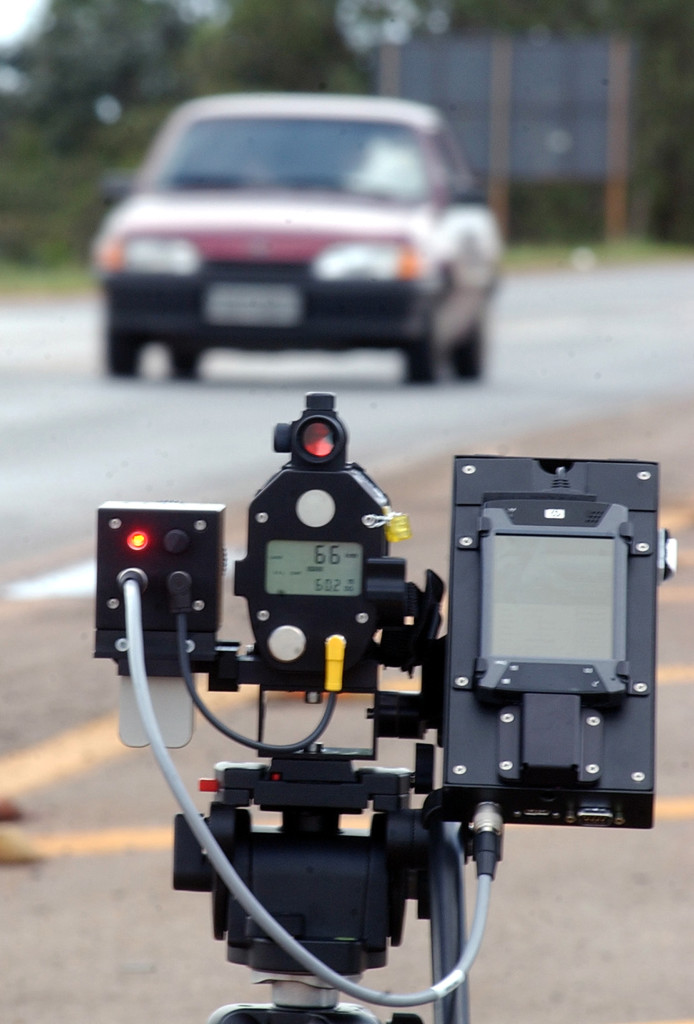The Power Of Pizza
When you want to recognize people for their wonderful work, dollar-for-dollar, the best value on the planet is pizza.
Research shows monetary rewards aren’t all that rewarding, and the thinking carries with pizza – you can buy bargain brand, wood-fired, free-range, vegan, or designer, the power of pizza is independent of pedigree. The power of pizza is about the forethought and intention to make the celebration happen. You must realize that people made the extra effort; you must decide you want to tell them you appreciate their work; you must figure out the leaders of the folks that did the work so you can let them know their people did a great job and that you’re buying them pizza; you must schedule the venue (the venue doesn’t actually matter); send out the invitation; order the pizza; and host the celebration. With pizza, you spend your time on behalf of their behavior, and that’s special.
Here are the rules of pizza:
Rule 1 – Buy 50% more pizza than is reasonable. They didn’t skimp on their effort, so don’t skimp on the pizza. When you buy extra pizza, you tell people they matter; you tell them they’re worth it; you tell them that no one will go hungry on your watch. One good outcome – they take the extra pizza back to the office, their coworkers smell it, and ask where they got it. Now, they get to tell the story of how, out of the blue, they were invited to a pizza party to recognize their excellent performance. But the best possible outcome is the extra pizza is taken home and given to the kids. The kids get pizza, and the proud parent gets to tell the story of their special lunch. Leftover pizza has real power.
Rule 2 – Buy a small salad. For those that want to celebrate yet watch their waste line, salad says you thought of them. But don’t buy a big salad because even the most vigilant salad-eaters celebrate with pizza. (See rule 1.)
Rule 3 – There is a natural hierarchy of drinks, and higher is better. At the top are beer and wine (no need to explain); next is fully caffeinated, full calorie soda; next is diet soda; next is flavored seltzer (it’s the bubbles that matter). If you’re considering anything less than seltzer, don’t.
Rule 4 – Keep the agenda simple. Here’s a good template: 1. Thank you for your amazing work. 2. What kind of pizza do you want?
Rule 5 – Use pizza sparingly. It’s power is inversely proportional to frequency.
People don’t want compensation for their extra special work, they want recognition. And pizza could be the purest form of recognition – simple, straightforward, and tangible.
In reality, pizza has nothing to do with pizza, and has everything to do with honest, heartfelt recognition of exceptional work.
Image credit – Jeff Kubina.
Summoning The Courage To Ask
I’ve had some great teachers in my life, and I’m grateful for them. They taught me their hard-earned secrets, their simple secrets. Though each had their own special gifts, they all gave them in the same way – they asked the simplest questions.
Today’s world is complex – everything interacts with everything else; and today’s pace is blistering – it’s tough to make time to understand what’s really going on. To battle the complexity and pace, force yourself to come up with the simplest questions. Here are some of my favorites:
For new products:
- Who will buy it?
- What must it do?
- What should it cost?
For new technologies:
- What problem are you trying to solve?
- How will you know you solved it?
- What work hasn’t been done before?
For new business models:
- Why are you holding onto your decrepit business model?
For problems:
- Can you draw a picture of it on one page?
- Can you make it come and go?
For decisions:
- What is the minimum viable test?
- Why not test three or four options at the same time?
For people issues:
- Are you okay?
- How can I help you?
For most any situation:
- Why?
These questions are powerful because they cut through the noise, but their power couples them to fear and embarrassment – fear that if you ask you’ll embarrass someone. These questions have the power to make it clear that all the activity and hype is nothing more than a big cloud of dust heading off in the wrong direction. And because of that, it’s scary to ask these questions.
It doesn’t matter if you steal these questions directly (you have my permission), twist them to make them your own, or come up with new ones altogether. What matters is you spend the time to make them simple and you summon the courage to ask.
Image credit — Montecruz Foto.
Can It Grow?
 If you’re working in a company you like, and you want it to be around in the future, you want to know if it will grow. If you’re looking to move to a new company, you want to know if it has legs – you want to know if it will grow. If you own stock, you want to know if the company will grow, and it’s the same if you want to buy stock. And it’s certainly the case if you want to buy the whole company – if it can grow, it’s worth more.
If you’re working in a company you like, and you want it to be around in the future, you want to know if it will grow. If you’re looking to move to a new company, you want to know if it has legs – you want to know if it will grow. If you own stock, you want to know if the company will grow, and it’s the same if you want to buy stock. And it’s certainly the case if you want to buy the whole company – if it can grow, it’s worth more.
To grow, a company has to differentiate itself from its competitors. In the past, continuous improvement (CI) was a differentiator, but today CI is the minimum expectation, the cost of doing business. The differentiator for growth is discontinuous improvement (DI).
With DI, there’s an unhealthy fascination with idea generation. While idea generation is important, companies aren’t short on ideas, they’re short on execution. But the one DI differentiator is the flavor of the ideas. To do DI a company needs ideas that are radically different than the ones they’re selling now. If the ideas are slightly twisted variants of today’s products and business models, that’s a sure sign continuous improvement has infiltrated and polluted the growth engine. The gears of the DI engine are gummed up and there’s no way the company can sustain growth. For objective evidence the company has the chops to generate the right ideas, look for a process that forces their thinking from the familiar, something like Jeffrey Baumgartner’s Anticonventional Thinking (ACT).
For DI-driven growth, the ability to execute is most important. With execution, the first differentiator is how the company investigates radically new ideas. There are three differentiators – a focus on speed, a “market first” approach, and the use of minimum viable tests (MVTs). With new ideas, it’s all about how fast you can learn, so speed should come through loud and clear. Without a market, the best idea is worthless, so look for “market first” thinking. Idea evaluation starts with a hypothesis that a specific market exists (the market is clearly defined in the hypothesis) which is evaluated with a minimum viable test (MVT) to prove or disprove the market’s existence. MVTs should error on the side of speed – small, localized testing. The more familiar minimum viable product (MVP) is often an important part of the market evaluation work. It’s all about learning about the market as fast as possible.
Now, with a validated market, the differentiator is how fast company can rally around the radically new idea and start the technology and product work. The companies that can’t execute slot the new project at the end of their queue and get to it when they get to it. The ones that can execute stop an existing (lower value) project and start the new project yesterday. This stop-to-start behavior is a huge differentiator.
The company’s that can’t execute take a ready-fire-aim approach – they just start. The companies that differentiate themselves use systems thinking to identify gaps in resources and capabilities and close them. They do the tough work of prioritizing one project over another and fully staff the important ones at the expense of the lesser projects. Rather than starting three projects and finishing none, the companies that know how to do DI start one, finish one, and repeat. They know with DI, there’s no partial credit for a project that’s half done.
All companies have growth plans, and at the highest level they all hang together, but some growth plans are better than others. To judge the goodness of the growth plan takes a deeper look, a look into the work itself. And once you know about the work, the real differentiator is whether the company has the chops to execute it.
Image credit – John Leach.
The Safest Bet Is Far Too Risky
 It’s harder than ever to innovate, and getting harder.
It’s harder than ever to innovate, and getting harder.
The focus on growth can be empowering, but when coupled with signed-in-blood accountability, empowering turns to puckering. It’s an unfair double-bind. Damned if you try something new and it doesn’t work, and damned if you stay the course and don’t hit the numbers. The most popular approach seems to be to do more of what worked. A good approach, but not as good as it’s made out to be.
Doing more of what worked is good, and it works. But it can’t stand on its own. With today’s unreasonable workloads, every resource is fully booked and before doing more of anything, you’ve got to do less of something else. ‘More of what worked’ must walk hand-in-hand with ‘Stop what didn’t work.’ Without stopping, without freeing up resources, ‘more of what worked’ is insufficient and unsustainable.
But even the two together are insufficient, and there’s a much needed third leg to stabilize the stool – ‘starting new work.’ Resources freed by stopping are allocated to starting new work, and this work, also known as innovation, is the major source of growth.
‘More of what worked’ is all about productivity – doing more with the same resources; and so is ‘stopping what didn’t work’ – reclaiming and reallocating ineffective resources. Both are important, but more importantly – they’re not innovation.
As you’re well aware, the rules are changing faster than ever, and at some point what worked last year won’t work this year. The only way to stay ahead of a catastrophe is to make small bets in unproven areas. If the bets are successful, they turn into profitable innovation and growth. But the real value is the resiliency that comes from the ritualistic testing/learning cycles.
Going all-in on what worked last year is one of the riskiest bets you can make.
An Injection Of Absurdity
Things are cyclic, but there seems to be no end to the crusade of continuous improvement. (Does anyone remember how the Crusades turned out?) If only to take the edge off, there needs to be an injection of absurdity.
There’s no pressure with absurdity – no one expects an absurd idea to work. If you ask for an innovative idea, you’ll likely get no response because there’s pressure from the expectation the innovative idea must be successful. And if you do get a response, you’ll likely get served a plain burrito of incremental improvement garnished with sour cream and guacamole to trick your eye and doused in hot sauce to trick your palate. If you ask for an absurd idea, you get laughter and something you’ve never heard before.
When drowning in the sea of standard work, it takes powerful mojo to save your soul. And the absurdity jetpack is the only thing I know with enough go to launch yourself to the uncharted oasis of new thinking. Immense force is needed because continuous improvement has serious mass – black hole mass. Like with light, a new idea gets pulled over the event horizon into the darkness of incremental thinking. But absurdity doesn’t care. It’s so far from the center lean’s pull is no match.
But to understand absurdity’s superpower is to understand what makes things absurd. Things are declared absurd when they cut against the grain of our success. It’s too scary to look into the bright sun of our experiences, so instead of questioning their validity and applicability, the idea is deemed absurd. But what if the rules have changed and the fundamentals of last year’s success no longer apply? What if the absurd idea actually fits with the new normal? In a strange Copernican switch, holding onto to what worked becomes absurd.
Absurd ideas sometimes don’t pan out. But sometimes they do. When someone laughs at your idea, take note – you may be on to something. Consider the laughter an artifact of misunderstanding, and consider the misunderstanding a leading indicator of the opportunity to reset customer expectations. And if someone calls your idea absurd, give them a big hug of thanks, and get busy figuring out how to build a new business around it.
Retreating From Activity To Progress
 Every day is a meeting-to-meeting sprint with no time for some of the favorite fundamentals like the bathroom and food. Though crazy, it’s the norm and no longer considered crazy. But it is crazy. When you’re too busy to answer emails that’s one thing, but when you’re too busy to realize answering email isn’t progress, that’s a problem.
Every day is a meeting-to-meeting sprint with no time for some of the favorite fundamentals like the bathroom and food. Though crazy, it’s the norm and no longer considered crazy. But it is crazy. When you’re too busy to answer emails that’s one thing, but when you’re too busy to realize answering email isn’t progress, that’s a problem.
Our in-boxes are full; our plates are full; our calendars are full. But our souls are empty.
You’re clear on what must get done over the next 48 hours, but the pace is too fast to know why the work is important in the first place. (One of the fastest way to complete a task is to deem it unimportant and don’t do it – all of the done with none of the work.) But it’s worse. It’s too fast to do the work no one is asking you to do, and it’s too fast to do the work you were born to do.
We have confused activity with progress; and with all the activity, we’ve forgotten what it feels like to think. We need a retreat.
The perfect retreat eliminates distractions and gives people time to think. After a nice Sunday flight into Boston, it’s a calm two hour coach ride to rural New Hampshire. (Done right, a coach is soothing.) After pickup it’s a fifteen minute drive to a remote trail head. With a pack on your back, it’s a five minute walk to a big, remote cabin. No cell service, no power, no interruptions.
As you enter the cabin, you unload all your electronics into bin (Yes, your smart phone goes in the bin.) which is locked away for the remainder of the retreat. You race to get the best bunk, drop your gear, and share a meal with your fellow over achievers. (Y es, the non-disclosures are signed so you can actually talk to each other.)
The first day is all about recognizing the discomfort that comes with no distractions and your natural tendency to create distraction to sooth your discomfort. The objective is to help you remember what if feels like to have more than 30 seconds of uninterrupted time. Then, once you remember, it’s time to actually think.
There are no video conferencing capabilities (or electricity) in the cabin, so all work is done the old-fashioned way – face-to-face. The objective is to help you remember the depth, complexity, and meaning that come when working with actual faces. Yes, there’s good facilitated discussion, but the topics aren’t as important as remembering how to share and trust.
There is ritualistic work of cooking, cleaning, splitting the wood, and stoking the fire. The objective is to remember what it feels like to connect the mind to the body and to connect with others. And, there’s a group hike every day to remember what it feels like to be grounded in the natural world. (Sometimes we forget the business world is actually part of the natural world.)
After the rituals and hikes have done their magic, the right discussions start to emerge, and deep contemplation dances with deep conversation. Though there’s a formal agenda, no matter. With the group’s awaking, the right agenda emerges.
At the end of the retreat, there’s immense sadness. This is a sign of importance and deep learning. And after the hugs and tears, there’s a spontaneous commitment to do it next year. With eyes dried, it’s off the bus station and then to the airport.
You don’t have to wait for the perfect retreat to start your journey. Start your practice by carving out an hour a day and set a recurring meeting with yourself and turn off your email. And start by asking yourself why. Those two tricks will set you on your way.
And if you’re interested in a real retreat, let me know.
Slower Can Be Faster
 There are two types of drivers – those that speed as a way of life and those that speed when they forget to pay attention. But for both, speed kills.
There are two types of drivers – those that speed as a way of life and those that speed when they forget to pay attention. But for both, speed kills.
For the everyday speeder, life is an opportunity to push limits and break rules. Every highway is a Formula One course; every traffic light an opportunity to run the red light. They know every speed trap and have honed their drag racing tactics, and, mostly, they don’t get caught. And driving this way year-on-year, they no longer realize they’re speeding and no longer see it as dangerous behavior. They see themselves as invincible and even take pride in their reckless behavior, and that’s dangerous.
If you’ve made the product before, or you’ve done something similar, you know all the traps and a fast business decision isn’t bad. But fast all the time isn’t the answer. When you’re in country that drives on the wrong side of the road and you approach a round-about, slower is better. When you don’t understand the road signs; when your left-right decisions are backward; and you don’t know how to negotiate the big circle of traffic, it’s pretty clear slower is better. But if you’ve been successful with your habitual speeding, you’ll likely accelerate into the traffic circle, rear-end someone, and flip yourself end others into a deadly pileup. And if you survive, likely curse those stupid drivers who didn’t know enough to get out of your way.
But there’s a simpler case that seals it. When you don’t know where you’re going, clicking off miles on the odometer isn’t progress, it’s just activity (that burns fuel). In these conditions, going fast in the wrong directions is worse than not driving at all. When you’re lost, it doesn’t make sense to speed.
The conscientious speeder keeps two hands on the wheel and maintain safe separation distance at upwards of ten car lengths. For them, every day is an opportunity to check the tire pressure and check the dipstick for oil. They plan out the trip, check the road conditions, and pay attention. (Cell phones off for these folks.)
Today’s cars are quiet and smooth which makes for calm, comfortable driving. But they’re also powerful, and, even with good intentions, a brief lapse in attention can generate breakneck speed. The conscientious speeder backs off the accelerator as soon as attention returns, and the danger is low. But, when a lapse in attention overlaps with a quick change in driving conditions (a deer runs across the highway, or the car in front jacks on the breaks), you can’t react quickly enough, and that’s dangerous.
If you’ve made the product before, or you’ve done something similar, and you checked the tire pressure, a lapse in attention once in a while isn’t bad. But doing the same drive every day and lulling yourself into a road trip stupor isn’t the answer. When you’re cruising over the limit on a well-lit, dead-straight highway, in your serenity you can easily speed past your exit without knowing. And the faster you’re going, the more exits you’ll miss until you realize it.
Sometimes, when the conditions are right, slower is faster.
The Importance Of Knowing Why You’re In The Boat
Whether at work or home, there are highs and lows. And you’re not getting special treatment, that’s how it is for everyone. And it’s a powerful fundamental, so don’t try to control it, ride it.
When the sailing is smooth, at some point it won’t be – the winds change, that’s what they do. And when you’re suddenly buffeted from a new direction, you take action. But what action? More sail or less? Port or starboard? Heave the anchor or abandon ship? It depends.
Your actions depend on your why. Regardless of wind or tide, your why points where it points and guides your actions. Much like magnetic north doesn’t move if you spin your compass, your long term why knows where it points. If the storm on the horizon is dead ahead, you go around it. But it’s a balance – deviate to skirt the storm, but do it with your long term destination in mind. If you know your long term why, the best course heading is clear.
Often you set sail without realizing you don’t have your why battened down and stowed. When you sail where you sailed last time, you know the landmarks and use them to navigate. You can unknowingly leave your why at the pier and still get to your destination. But when you’re blown out to sea and can no longer see the landmarks, your moral compass, your long term why, is the only way to tack and jibe toward your destination.
Before you set sail, it’s best to know why you’re in the boat.
A Singular Pillar of Productivity
 Productivity generates profit. No argument. But it has two sides – it can be achieved through maximization by increasing output with constant resources (machines and people) or through minimization with constant output and decreasing machines and people. And the main pillars of both flavors are data, tools, and process.
Productivity generates profit. No argument. But it has two sides – it can be achieved through maximization by increasing output with constant resources (machines and people) or through minimization with constant output and decreasing machines and people. And the main pillars of both flavors are data, tools, and process.
Data is used to understand how things are going so they can be made more productive. Process output is measured, yields are measured, and process control charts are hung on the wall like priceless art. Output goes up and costs go down. And the two buckets of cost – people and machines – are poured out the door. But data on its own doesn’t know how to improve anything. The real heroes are the people that look at the data and use good judgment to make good decisions.
You can pull the people out of the process to reduce costs, but you can’t pull the judgment out productivity improvement work. And here’s the difference – processes are made transactional and repetitive so people can be removed, and because judgment can’t be made into a transactional process, people are needed to do productivity improvement work. People and their behavior – judgment – are the keys.
Tools are productivity’s golden children. Better tools speed up the work so more can get done. In the upswing, output increases to get more work done; in the downturn, people leave to reduce cost. Tools can increase the quality (maximize) or reduce the caliber of the people needed to do the work (minimize). But the tools aren’t the panacea, the real panacea are the people that run them.
Any analytical tool worth its salt requires judgment by the person that runs it. And here’s where manufacturing’s productivity-through-process analogy is pushed where it doesn’t belong. Companies break down the process to run the tools into 6000 to 7000 simple steps, stuff them into a 500 page color-coded binder, provide a week of training and declare standard work has saved the day because, now that the process has been simplified and standardized, everyone can run the tool at 100% efficiency. But the tool isn’t the important part, neither is the process of using it. The important part is the judgment of the people running it.
Productivity of tools is not measured in the number of design cycles per person or the number of test cases run per day. This manufacturing thinking must be banished to its home country – the production floor. The productivity of analytical tools is defined by the goodness of the output when the time runs out. And at the end of the day, measuring the level of goodness also requires judgment – judgment by the experts and super users. With tools, it’s all about judgment and the people exercising it.
And now process. When the process is made repetitive, repeatable, and transactional, it brings productivity. This is especially true when the process lets itself to being made repetitive, repeatable, and transactional. Here’s a good one – step 1, step 2, step 3, repeat for 8 hours. Dial it in and watch the productivity jump. But when it’s never been done before, people’s judgment governs productivity; and when the process has no right answer, the experts call the ball. When processes are complex, undefined, or the first of their kind, productivity and judgment are joined at the hip.
Processes, on their own, don’t rain productivity from the sky; the real rainmakers are the people that run them.
Today’s battle for productivity is overwhelmingly waged in the trenches of minimization, eliminating judgment skirmish by skirmish. And productivity’s “more-with-less” equation has been toppled too far toward “less”, minimizing judgment one process at a time.
Really, there’s only one pillar of productivity, and that’s people. As everyone else looks to eliminate judgment at every turn, what would your business look like if you went the other way? What if you focused on work that demanded more judgment? I’m not sure what it would look like, other than you’d have little competition.
Look Inside, Take New Action, Speak New Ideas.
 There’s a lot buzz around reinvention and innovation. There are countless articles on tools and best practices; many books on the best organizational structure, and plenty on roles and responsibilities. There’s so much stuff that it’s tough to define what’s missing, even when what’s missing is the most important part. Whether its creativity, innovation, or doing new, the most important and missing element is your behavior.
There’s a lot buzz around reinvention and innovation. There are countless articles on tools and best practices; many books on the best organizational structure, and plenty on roles and responsibilities. There’s so much stuff that it’s tough to define what’s missing, even when what’s missing is the most important part. Whether its creativity, innovation, or doing new, the most important and missing element is your behavior.
Two simple rules to live by: 1) Look inside. 2) Then, change your behavior.
To improve innovation, people typically look to nouns for the answers – meeting rooms, work spaces, bean bag chairs, and tools, tools, tools. But the answer isn’t nouns, the answer is verbs. Verbs are action words, things you do, behaviors. And there are two behaviors that make the difference: 1.) Take new action. 2) Speak new ideas.
To take new action, you’ve got to be perceptive, perceptive about what’s blocking you from taking new action. The biggest blocker of new action is anxiety, and you must learn what anxiety feels like. Thought the brain makes anxiety, it’s easiest to perceive anxiety in the body. For me, anxiety manifests as a cold sinking feeling in my chest. When I recognize the coldness, I know I’m anxious. Your task is to figure out your anxiety’s telltale heart.
To learn what anxiety feels like, you’ve got to slow down enough to actually feel. The easiest way for overbooked high performers to make time to slow down is to schedule a recurring meeting with yourself. Schedule a recurring 15 minute meeting (Daily is best.) in a quiet place. No laptop, no cell phone, no paper, no pencil, no headphones – just you and quiet sitting together. Do this for a week and you’ll learn what anxiety feels like.
To take new action, you’ve got to be receptive, receptive to the anxiety. You’ll naturally judge anxiety as bad, but that’s got to change. Anxiety isn’t bad, it’s just unpleasant. And in this case, anxiety is an indicator of importance. When you block yourself from taking an important action, you create anxiety. So when you feel anxiety, be receptive – it’s your body telling you the yet-to-be-taken action is important.
After receptive, it’s time to be introspective. Look inside, turn toward your anxiety, and understand why the task is important. Typically it’s important because it threatens the status quo. Maybe it would dismantle your business model, or maybe it will unglue the foundation of your company, or maybe something smaller yet threatening. Once you understand its importance, it’s time to use the importance as the forcing function to start the task first thing tomorrow morning.
The second magic behavior is to speak new ideas. To speak new ideas, you’ve got to be perceptive to the reason you self censor. Before you can un-censor, you’ve got to be aware you self censor. It’s time to get in touch with your unsaid ideas. Now that you no longer need the 15 minute meeting for taking new action, change the agenda to speaking new ideas. Again, no laptop, cell phone, and headphones, but this time it’s you and quiet figuring out what if feels like right before you self-censor.
In your meeting, remember back to a brainstorming session when you had a crazy idea, but decided to bury it. Get in touch with what your body felt like as you stopped yourself from speaking your crazy idea. That’s the feeling you want to be aware of because it’s a leading indicator of your self censoring behavior.
Next, it’s time to be receptive, receptive to the idea that just as you choose to self censor, you can choose to stop your self censorship, and receptive to the idea that there’s a deep reason for your behavior.
Now, it’s on to introspective. When you have a crazy idea, why do you keep your mouth shut? Turn toward the behavior and you may see you self censor because you don’t want to be judged. If you utter a crazy idea, you may be afraid you’ll be judged as crazy or incompetent. Likely, you’re afraid saying your idea out loud will change something – what other people think of you.
There are a couple important notions to help you battle your fear of judgment. First, you are not your ideas. You can have wild ideas and be highly competent, highly valued, and a good person. Second, other people’s judgment is about them, not you. They are threatened by your idea, and instead of looking inside, they protect themselves by trying to knock you down.
There’s a lot of nuance and complexity around creativity and innovation, but it doesn’t have to be that way. Really, it comes down to four things: own your behavior, look inside, take new action, and speak new ideas. It’s that simple.
You Can’t Saw People in Half
 When there’s a big job, you’re taught to break it into a series of sub tasks, sequence them, and go after them with vigor. When there are different types of work within a job, you’re taught to break down the work into related bits of work, assign specialists, and take them on with the utmost efficiency. When there’s a big problem, you’re taught to break it into mini problems, solve them one at a time, and then recombine. This works sometimes, but more often than not, it doesn’t. The world is complex; everything’s interconnected; and the improvement itself can change the system and create a new and more powerful dilemma. Though we know this, divide and conquer is still the favorite first choice.
When there’s a big job, you’re taught to break it into a series of sub tasks, sequence them, and go after them with vigor. When there are different types of work within a job, you’re taught to break down the work into related bits of work, assign specialists, and take them on with the utmost efficiency. When there’s a big problem, you’re taught to break it into mini problems, solve them one at a time, and then recombine. This works sometimes, but more often than not, it doesn’t. The world is complex; everything’s interconnected; and the improvement itself can change the system and create a new and more powerful dilemma. Though we know this, divide and conquer is still the favorite first choice.
Okay, it works sometimes, and it’s reasonable to use it with projects and problems, but it doesn’t work on all things. And by far, the most egregious misuse of the separation principle is when it’s used on people.
Mind and body are parts of an inseparable whole, but in practice, that’s not how it goes. Exercise for the body improves the mind, but exercise is not mandatory. And in the long term, exercise is preventive maintenance for body and the mind – lower healthcare costs, happier people, more productivity, and better work. Our machines get preventive maintenance but our people don’t. For some reason, we think it’s possible to separate the mind from the body.
Home life and work life are two parts of a single, integrated, whole life, but in practice, they’re considered two independent elements. Much like the old magician’s trick, we’re sawed in half yet expected to function as a whole person at work. Too much work and the family suffers; and when the family suffers, the work suffers. It’s that simple. Not enough sleep at home, the work suffers. (And, maybe some sleep at work.) Crisis at home and no time off to take care of it, work suffers. Time away from the kids, the work suffers. The best way to create resentment and bad attitudes is to saw people’s lives in half. We have only one life, and it can’t be parsed into independent elements. The magician’s trick isn’t real. It’s a trick.
When accountability is demanded without the authority, resources, tools, training or time, it’s a cardinal misuse of the separation principle. Here, resources are subtracted from the problem and the solution is no longer part of the equation. This one causes your best people to apply herculean effort and rip their lives apart trying to achieve success where it’s not possible.
We don’t run our machines without oil; we don’t run them at twice the recommended speed; we don’t expect them to run without electrical power or compress air; and we don’t expect them to do their work without the tooling. Yet we expect people to do their work without the resources. We religiously perform preventive maintenance on our machines; we schedule downtime; we fix them when they break; and we buy the best replacement parts to keep them in top form. For people, however, we don’t mandate exercise; we ask them to work through their vacation; and we ask them to work at unsustainable speeds.
Today’s environment is strange. People are broken into parts and expected to perform like well oiled machines; and machines are given all they need to get their work done, and people are not.
It’s time to treat problems like problems, machines like machines, and people like people.




 Mike Shipulski
Mike Shipulski